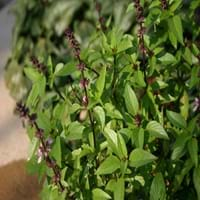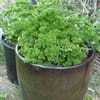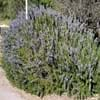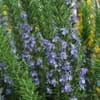Life Span
Annual
Perennial
Origin
Middle Africa, Southern Africa, Southern Asia, Southeastern Asia
Europe, Asia
Types
Not Available
Not Available
Habitat
gardens, Wet lands
Dry areas, Roadsides, stream banks, Stream side, Waste areas
USDA Hardiness Zone
9-11
3-7
Sunset Zone
A1, A2, A3, H1, H2, 1a, 1b, 2a, 2b, 3a, 3b, 4, 5, 6, 7, 8, 9, 10, 11, 12, 13, 14, 15, 16, 17, 18, 19, 20, 21, 22, 23, 24
1a, 1b, 2a, 2b, 3a, 3b, 4, 5, 6, 7, 8, 9, 10, 11, 12, 13, 14, 15, 16, 17, 18, 19, 20, 21, 22, 23, 24
Habit
Clump-Forming
Clump-Forming
Flower Color
Purple, Light Pink, Lavender
White, Lavender
Flower Color Modifier
Bicolor
Bicolor
Fruit Color
Tan
Sandy Brown
Leaf Color in Spring
Purple, Dark Green, Burgundy, Bronze
Gray Green, Gray
Leaf Color in Summer
Purple, Dark Green, Burgundy, Bronze
Gray Green, Gray
Leaf Color in Fall
Purple, Dark Green, Burgundy, Bronze
Gray Green, Gray
Leaf Color in Winter
Light Green
Light Green
Leaf Shape
Oval
Arrowhead
Plant Season
Spring, Summer, Fall, Winter
Spring, Summer, Fall
Sunlight
Full Sun
Full Sun, Partial Sun
Growth Rate
Very Fast
Fast
Type of Soil
Loam, Sand, Well drained
Clay, Loam, Sand
The pH of Soil
Neutral
Acidic, Neutral, Alkaline
Soil Drainage
Well drained
Well drained
Bloom Time
Indeterminate
Summer, Late Summer, Early Fall
Tolerances
Drought
Drought, Dry soil
Where to Plant?
Container, Ground, Pot
Container, Ground
How to Plant?
Rooted stem cutting, Seedlings, Stem Planting
Seedlings
Plant Maintenance
Medium
Low
Watering Requirements
Keep ground moist, Requires regular watering, Water when soil is dry
Do Not over Water, Never Over-water, Requires regular watering, Water when soil is dry
In Summer
Lots of watering
Lots of watering
In Spring
Moderate
Moderate
In Winter
Average Water
Average Water
Soil pH
Neutral
Acidic, Neutral, Alkaline
Soil Type
Loam, Sand
Clay, Loam, Sand
Soil Drainage Capacity
Well drained
Well drained
Sun Exposure
Full Sun
Full Sun, Partial Sun
Pruning
Pinch or prune as they grow to promote branching and bushiness
Prune if you want to improve plant shape, Prune in spring, Remove damaged leaves, Remove dead leaves
Fertilizers
All-Purpose Liquid Fertilizer
fertilize every 2-3 weeks while growing, fertilize in growing season
Pests and Diseases
Red blotch
Caterpillars, Leaf Hoppers, Nematodes, Spider mites
Plant Tolerance
Drought
Drought, Frost
Flower Petal Number
Single
Single
Fragrant Bark/Stem
Yes
Yes
Foliage Texture
Medium
Medium
Foliage Sheen
Not Available
Matte
Attracts
Not Available
Flying insects, Insects, Spider Mites
Allergy
Respiratory problems, Runny nose, Skin rash, Vomiting
Avoid during Pregnancy, Headache, Stomach pain, Vomiting
Aesthetic Uses
Showy Purposes
Beautification, Landscape Designing, Showy Purposes
Beauty Benefits
Not Available
Not Available
Environmental Uses
Air purification
Air purification
Medicinal Uses
Cough, Cramps, Digestive disorders, Insomnia, Skin Disorders, Vomiting
Arthritis, Cold, constipation, Fever, Insomia, Migraines, Upset stomach
Part of Plant Used
Leaves
Whole plant
Other Uses
Air freshner, Can be made into a herbal tea, Used As Food, Used as a spice
Air freshner, Decoration Purposes, Employed in herbal medicine, Making Perfumes, Making Shampoo, Making Sweet Scented Oil, Medicinal oil, Used as Ornamental plant, Used for its medicinal properties
Used As Indoor Plant
Insignificant
Yes
Used As Outdoor Plant
Yes
Yes
Garden Design
Bedding Plant, Container, Edible, Herb / Vegetable, Mixed Border
Container, Herb / Vegetable, Mixed Border
Botanical Name
OCIMUM basilicum var. purpurascens
NEPETA cataria
Common Name
Purple Basil
Cat Nip, Catnip
In Hindi
बैंगनी तुलसी के पौधे
कटनीप
In German
Lila Basilikum Pflanze
Katzenminze
In French
plante de basilic pourpre
cataire
In Spanish
planta de albahaca morada
Catnip
In Greek
Μωβ βασιλικό φυτό
Είδος δυόσμου
In Portuguese
Planta da manjericão roxo
catnip
In Polish
Purpurowy bazylia roślin
Kocimiętka
In Latin
Ocimum, herba Purple
catnip
Phylum
Tracheophyta
Magnoliophyta
Class
Magnoliopsida
Magnoliopsida
Family
Lamiaceae
Lamiaceae
Clade
Asterids
Angiosperms, Asterids, Eudicots
Tribe
Not Available
Mentheae
Subfamily
Not Available
Nepetoideae
Number of Species
Not Available
Season and Care of Purple Basil and Catnip
Season and care of Purple Basil and Catnip is important to know. While considering everything about Purple Basil and Catnip Care, growing season is an essential factor. Purple Basil season is Spring, Summer, Fall and Winter and Catnip season is Spring, Summer, Fall and Winter. The type of soil for Purple Basil is Loam, Sand, Well drained and for Catnip is Clay, Loam, Sand while the PH of soil for Purple Basil is Neutral and for Catnip is Acidic, Neutral, Alkaline.
Purple Basil and Catnip Physical Information
Purple Basil and Catnip physical information is very important for comparison. Purple Basil height is 60.96 cm and width 30.48 cm whereas Catnip height is 980.00 cm and width 60.00 cm. The color specification of Purple Basil and Catnip are as follows:
Purple Basil flower color: Purple, Light Pink and Lavender
Purple Basil leaf color: Purple, Dark Green, Burgundy and Bronze
Catnip flower color: White and Lavender
- Catnip leaf color: Gray Green and Gray
Care of Purple Basil and Catnip
Care of Purple Basil and Catnip include pruning, fertilizers, watering etc. Purple Basil pruning is done Pinch or prune as they grow to promote branching and bushiness and Catnip pruning is done Prune if you want to improve plant shape, Prune in spring, Remove damaged leaves and Remove dead leaves. In summer Purple Basil needs Lots of watering and in winter, it needs Average Water. Whereas, in summer Catnip needs Lots of watering and in winter, it needs Average Water.





